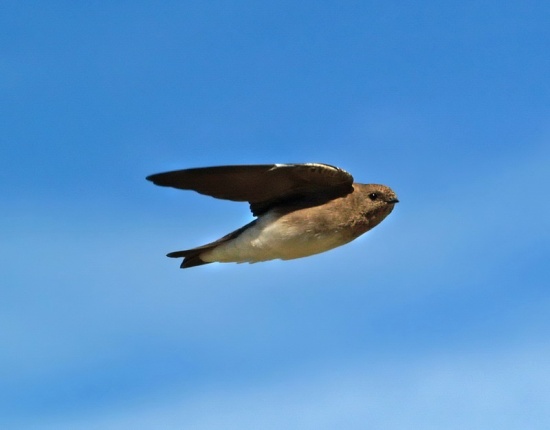Aloktewari (talk | contribs) |
(photo caption) |
||
| (One intermediate revision by one other user not shown) | |||
| Line 1: | Line 1: | ||
{{incomplete}} | {{incomplete}} | ||
| − | [[Image:53334800Brown Martina.jpg|thumb|550px|right|Photo by CollinBax | + | [[Image:53334800Brown Martina.jpg|thumb|550px|right|Photo by {{user|CollinBax|CollinBax}}<br />Floamingo Vlie, Cape Town, South Africa, April 2007]] |
| − | <br /> | ||
| − | |||
| − | |||
'''Alternative name: Brown-throated Martin''' | '''Alternative name: Brown-throated Martin''' | ||
;[[:Category:Riparia|Riparia]] paludicola | ;[[:Category:Riparia|Riparia]] paludicola | ||
Latest revision as of 03:15, 30 August 2014
| This article is incomplete. This article is missing one or more sections. You can help the BirdForum Opus by expanding it. |
Alternative name: Brown-throated Martin
- Riparia paludicola
Identification
Small hirundine with character and behaviour of Sand Martin, but rather more compact form. Both upperparts and underparts duller than Sand Martin, contrasting less and no chest-band. Sexes similar, no seasonal variation. The color of the underpart vary geographically, varying from white to brownish.
Distribution
Large range in tropical Africa.
Taxonomy
Seven subspecies accepted:
- R. p. mauritanica in western Morocco
- R. p. minor from West Africa to Sudan and northeast Ethiopia
- R. p. schoensis in the Highlands of Ethiopia
- R. p. newtoni from eastern Nigeria to western Cameroon
- R. p. ducis from eastern Zaire to Uganda, Kenya and central Tanzania
- R. p. paludicola from Angola to Zambia, southern Tanzania and South Africa
- R. p. cowani in Madagascar
Grey-throated Martin was formerly included in this species.
Habitat
Behaviour
Breeds in winter (November-December). Nest in excavated tunnel in river or gorge bank. 2-6 white eggs. Male and female incubate both during 12 days. In Morocco extended range espcially when water is abudant.




